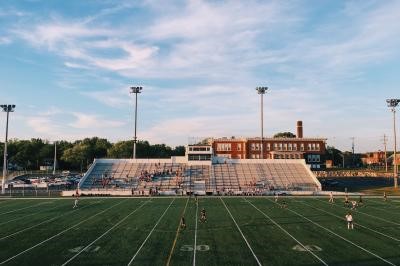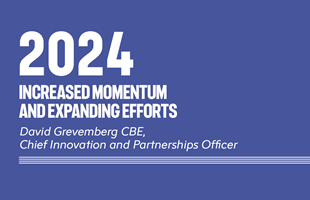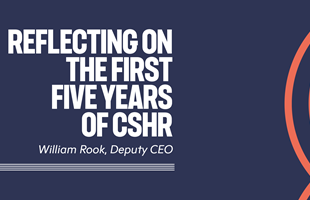Sport solidarity: Why local sport is critical to the COVID-19 response
23 Mar 2020

As countries around the world come to grips with the scale of response needed to combat the COVID-19 pandemic, my memories keep turning back to how local sport, community churches, Maori marae, schools and other local NGOs responded at the frontline of devastation caused by earthquakes in New Zealand in the last decade.
As Chair of New Zealand’s National Human Rights Institution, I had the privilege of working with community groups in the response and recovery and with incredible people in the Canterbury health system who will be called on now to address a different kind of disaster. This time, they’ll do so in solidarity with people in similar roles all over the world.
We did not know a lot about disasters when we started our work as part of New Zealand’s earthquake response. We learnt a lot along the way. One of the lessons was that local sports organisations had a critical role to play, alongside others, in doing the new work that was required of them and in ways that respected human rights standards.
"Local organisations, like sports clubs, are organised networks of people used to pulling together activities in their community."
The earthquakes took the places where sport was played just as the pandemic has. The clubs didn’t just put away their gear to wait. They rose to a new challenge and provided all sorts of assistance in their community that can only be provided by networks of people that care for each other. They also linked up with others they would not normally work with to do what was needed. In doing so, they were living the call to each of us in the Universal Declaration of Human Rights that everyone has duties to their community. They did not always use the flash words for human rights, but they did the work to protect the rights and dignity of the people around them.
The Olympics, professional sports and the elite end of sport are of course important in tackling the COVID-19 crisis, and my colleague Mary Harvey has set out some guidance for sports organsiations at all levels, but right now community-based responses are critical and where the most good can be done for the most people. The power of local people working in their communities is what we need right now. In disasters, players, coaches and other volunteers involved in school and club sport can be critical human rights defenders. These are networks that look after people. In the past, sports clubs have become places to get shelter or food. This time the response will be different, but it will again be based on solidarity with the people in the local community.
Why human rights are important in a pandemic
“Human rights don’t disappear the moment an earthquake, a hurricane or a tsunami strikes. We witnessed after the Indian Ocean tsunami, the earthquake in Haiti and many other disaster situations that during relief and recovery efforts the protection of human rights gains in importance as it can safeguard the dignity of those affected.”
United Nations Inter-Agency Standing Committee (2011) Operational Guidelines on the Protection of Persons in Situations of Natural Disasters
COVID-19 is a threat to people’s lives and health everywhere. The pandemic is a different type of disaster. The right to life and health are human rights. Governments must meet this threat, but they won’t be able to do it without support from us. We all have responsibilities to protect the lives and health of others. COVID-19 and the legislative, policy and service delivery responses to it have and will touch the lives of most of us in some way. The rights to life, to health and to an adequate standard of living have and will be affected in direct and indirect ways.
People’s lives and wellbeing will be affected by primary and secondary stressors. Primary stressors occur directly as a result of the event itself; the pandemic and the immediate death and harm associated with it. Secondary stressors include problems such as: the inability to access information, or participate in decision making processes affecting your life, financial stress; loss of services; and, loss of community connection and social isolation.
Primary and secondary stressors are interrelated. Over time it can be difficult to distinguish between the impact of the primary stressors and the pressure of everyday life events. The longer their intensity and persistence, the more likelihood there is of people developing distress or a mental health disorder.
In New Zealand we saw how these secondary stressors affected our children. We learnt from the Red Cross, Red Crescent and Save the Children that schools are essential to children and young people retaining and re-establishing a sense of place following a disaster. Schools are closing as a result of the current pandemic. This puts even more responsibility on local sports organisations to find ways to support children in their local sports networks. We need to find safe activities, even virtual activities, that bring children together in sport and physical activity. Doing so will ease pain, relieve tension and promote a sense of place. And, not just for the children but for everyone around them.
When we can open playgrounds and schools again, we must support children getting together for physical activity and play. As we move from response to recovery, national and international sports organisations must push governments to ensure local communities and sports organisations are involved – not excluded from – decision making about how sport will be brought back into community life.
In time we will get amazing local networks up and running again in places where sport is usually played. In the meantime, we need to turn to communities where we normally play, particularly to the children, and find ways to meet the challenges that face them and to keep them feeling they belong.
There are many instances already where sport is rising to the challenges we face and showing solidarity with communities most affected. The Centre for Sport and Human Rights will start highlighting these examples from today using #sportsolidarity on Twitter. We invite you to join us in showcasing the positive roles sport can play in responding to the COVID-19 pandemic.



